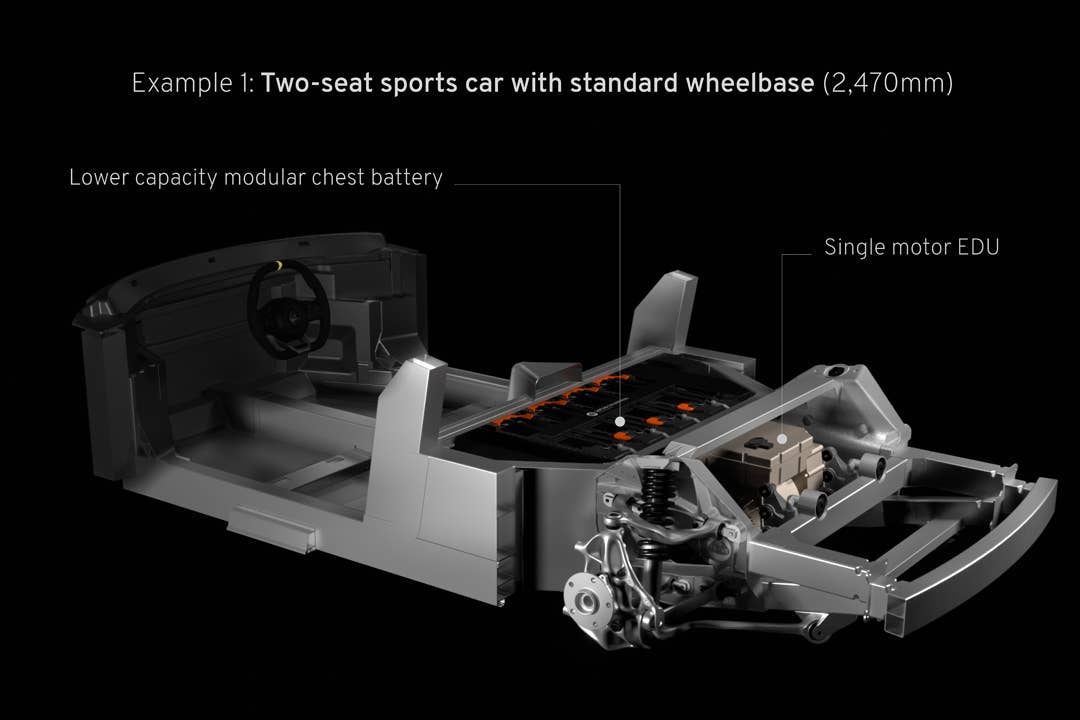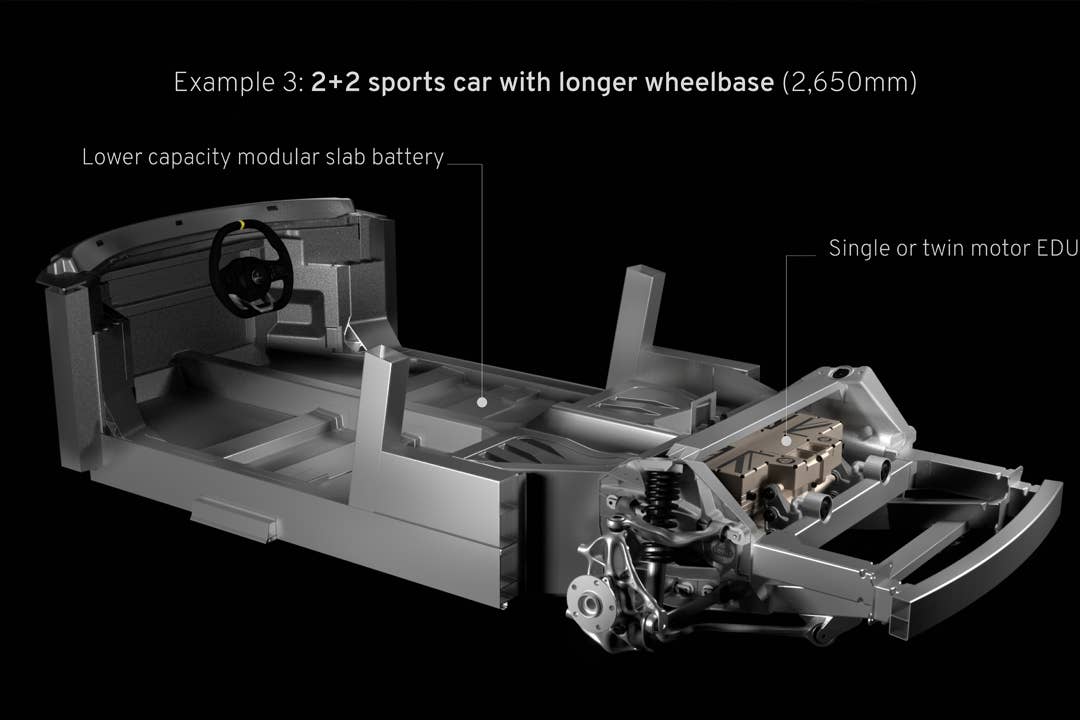In August, Lotus announced its venture into the electric vehicle market, starting with an electric SUV slated for a 2022 launch. Despite this, the brand remains dedicated to crafting lightweight sports cars and has now divulged additional details regarding its forthcoming electric lineup.
The upcoming two-seater electric sports car will employ the Lightweight Electric Vehicle Architecture, allowing for various chassis setups, as outlined in the press release. While its power output might not reach the levels of the 1,922-horsepower Evija, and the anticipated battery capacity could be lower, this compromise is made in the interest of reducing overall mass. Notably, the positioning of the motor-generator unit resembles that of mid-engine sports cars, presenting an intriguing prospect.

Lotus
Lotus has unveiled three configurations to date: a two-seater model with a smaller battery, a two-seater with an expanded battery, and a concept featuring four seats with the smaller battery option.
Essentially, the battery assumes a central role in the mid-engine layout, occupying the rear section of the two-seater vehicle with the motor-generator unit placed near the rear axle for power transmission and regenerative braking. The lightweight version features a 664.kWh battery pack, while the high-power dual-motor edition can accommodate up to 99.6kWh capacity.
The increased power output is showcased in the larger battery two-seater model, capable of generating a combined 650kW or 781 horsepower. This is a notable feat, particularly given the compact size of the vehicles Lotus aims to deploy these powertrains in, such as a model with a 97.2-inch wheelbase, potentially developed in partnership with Alpine for lightweight electric sports cars.
Another setup caters to a four-seater design, integrating the battery into the chassis base in a manner reminiscent of skateboard platforms like GM’s Ultium. While this configuration may not be tailored for the Lotus SUV, it allows for a rear-seating arrangement. Nevertheless, who buys a Lotus for school drop-offs?

Lotus
Richard Rackham, Lotus’ chief of vehicle concepts, a pivotal figure in the development of the Elise 25 years ago, mentioned in the announcement that the new lightweight “Project LEVA is as forward-thinking today as the Elise structure was in 1996.”
Additionally, he noted, “Staying loyal to Lotus principles, significant weight reductions have been accomplished across various fronts, with a strong emphasis on top-tier performance, efficiency, and safety ingrained in the structural design from the start – for instance, utilizing the vehicle structure as the battery enclosure, integrating an EDU, eliminating subframes, and refining the multi-link suspension components.”
Do you have an intriguing tale to share? Feel free to send it our way at tips@thedrive.com
